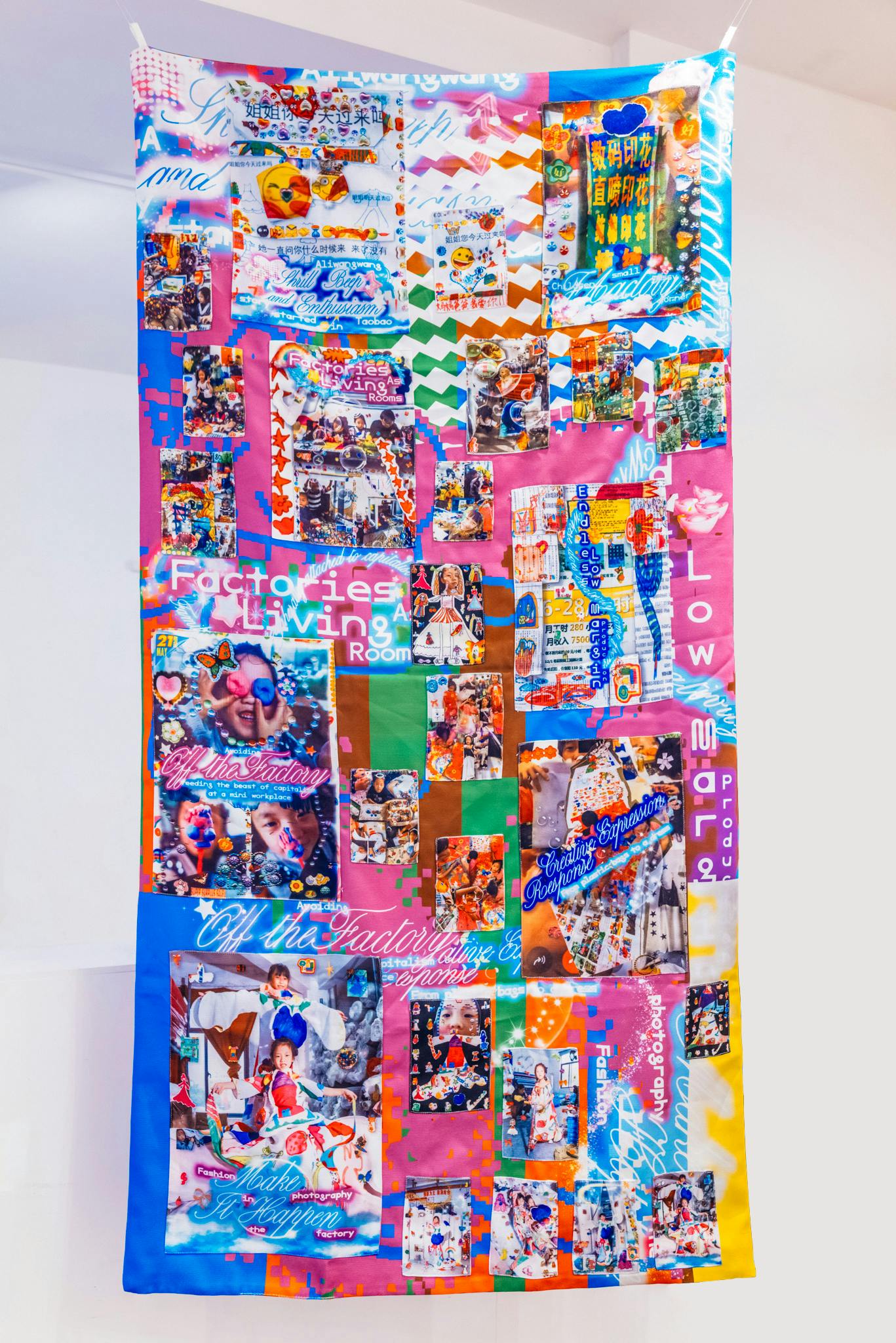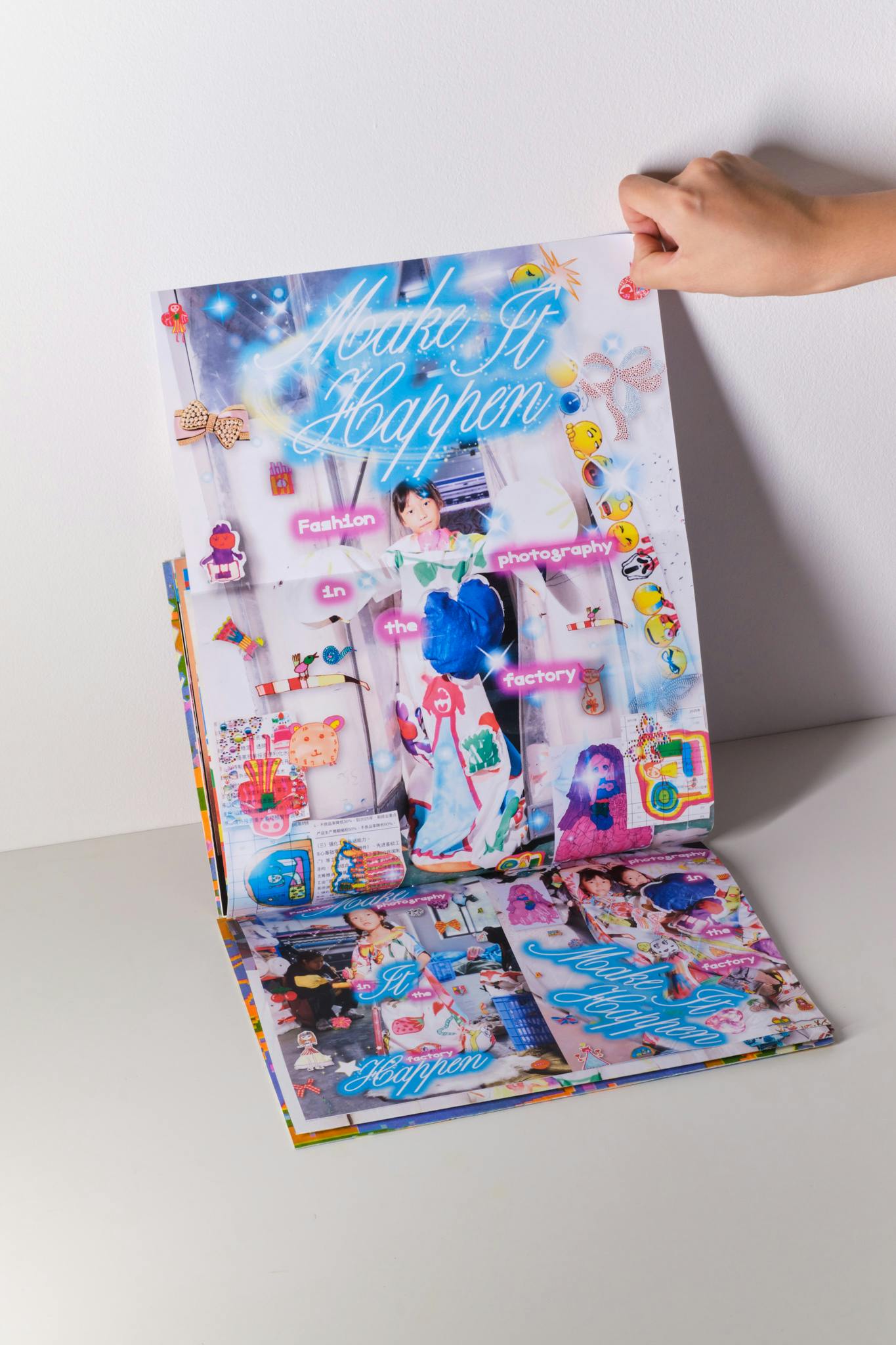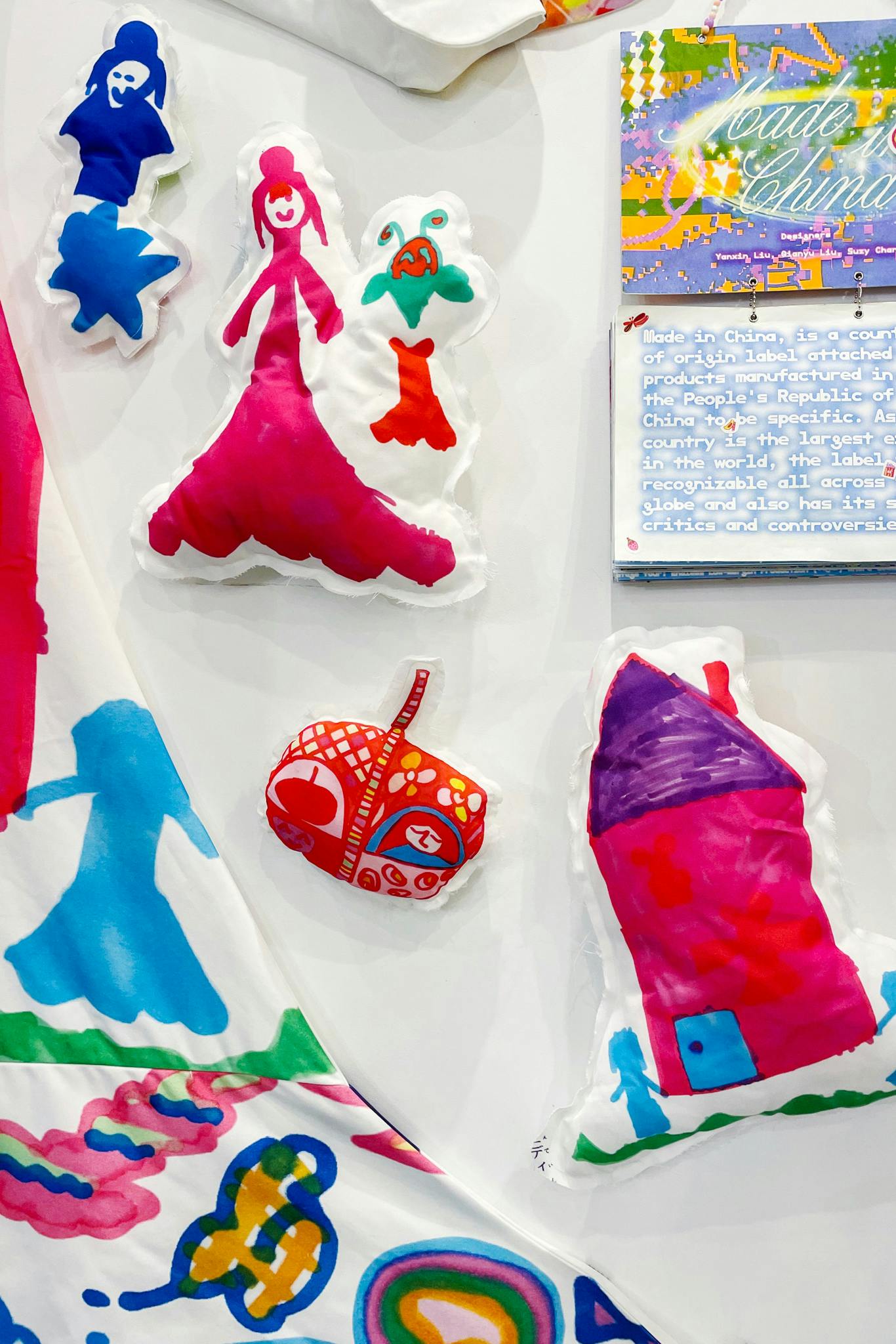Suzy Chan presents the real ‘Made in China’ story
Graphic designer Suzy Chan has spent the past two years working with kids in a Chinese factory, using co-creation to present what family life is really like in these often-denigrated work environments
When we last spoke to Suzy Chan in 2019, she was one of our Gradwatch picks – fresh out of her graphic design course at London College of Communication with a strikingly bold, saccharine-hued body of work that’s as much about social and cultural exploration and storytelling as it is pretty pictures and cute gummy bears.
When her studies finished in 2019, she decided to return to China, and what struck her was just how much things seemed to have changed: “China is always a very fast country – things are always changing. And it’s weird when you go back to your own culture after you’ve gone through the culture shock in another country – you then experience the reverse back in your country.
“A lot of things don’t change, like the language and the food and people’s values, but what’s changed is people’s emotions and their way of thinking – you can tell people have been changed subconsciously. They’ve been enrolled into this thinking that everything is about making money, then making more money – for me to see that model from the outside, it seems like things have become even faster than when I left. I think people have become frustrated and tired of that, but they can’t stop because of that feeling of insecurity.”
Alongside taking on various freelance design projects back in China, Chan decided to start her own brand, and found herself spending a lot of time visiting a fabric printing factory in Guangdong. It was during her visits that Chan was struck with an idea for her ambitious Made in China project. She noticed the young daughters of the factory owner, Xinxin and Yu, were always there while their parents worked – something that’s not unusual in China, according to Chan.
“I visited a lot as I was always there making samples and seeing how the products are going, but I think I began going just for the kids too. They were always left in the corner as their parents were busy and they seemed to really want to interact with me, so I just started creating things with them – I didn’t have any purpose at that point, but it was a trigger for me to want to do more research about what was going on with families like that.”
Having been working on her own brand alone for a year or so at that point, Chan relished the interaction. She’d already been working on some socially led design projects, and the idea of working with the kids on something that spoke to broader themes around work, life and raising children in China – as well as issues around the often unflattering, or ignorant stereotypes of life in Chinese factories – soon emerged.
“I was thinking that there’s a lot of families like the ones I met, but that group of people is unseen because when I was studying in the UK I noticed how common it was for people to speak about China very negatively – people were always talking about things like illegal working conditions and how people have no freedom, but nobody was presenting the story behind that,” says Chan.
As such, Made in China looks to use images, garments and more to present that story through the lens of the family she met at the Guangdong factory; exploring themes like neglected family relationships, children’s isolation and the negative impact of China’s position as the world’s largest exporter of goods. “The West understands ‘Made in China’ products to be low-quality, produced under poor working conditions with excessive working hours, etc, but this understanding is full of various contradictions, and the discussion cannot be completed through simple moral criticism,” says Chan.
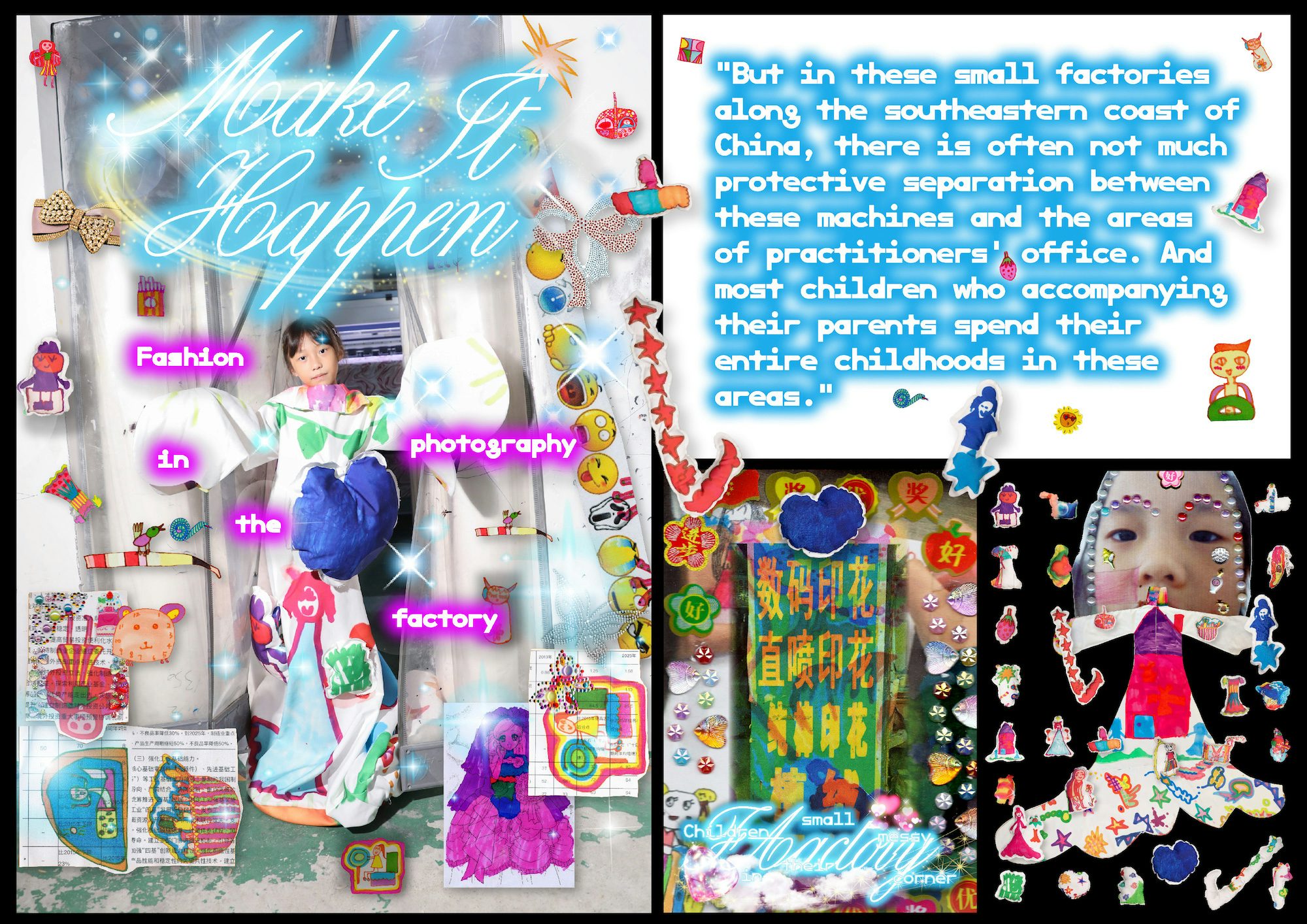

Chan went on to visit different factories, and in her experience of meeting a range of children she found that “their personalities have two extremes, one is very enthusiastic and longing for someone to accompany them. The second is extremely introverted, afraid to communicate with people.” Since their parents’ often work more than 12 hours a day, these kids were spending most of their time outside of school and during the holidays in the factories.
“When the media talks about Made in China, it talks about wages, working hours, left-behind children, labour security….” says Chan. But the reason people work such long hours, for the most part, is the family itself. “China is a country that attaches great importance to family responsibilities…. Behind the complex economic miracle of China, the motivation of individuals is very simple. But this delicate but more important issue has been overlooked,” says Chan.
To bring this complex issue to the fore, she began visiting Xinxin and Yu most weekends, bringing her painting tools and working with them to co-create clothes in a ‘mini factory’ they set up in a corner and making the most of the resources in the factory environment – “transforming high-efficiency industrialised machines into tools that allow them to see their talents”. Working with them over two years, she divided the creative process into a number of stages, focusing on things like writing, photography, graphics, illustration, fashion design, and book design.
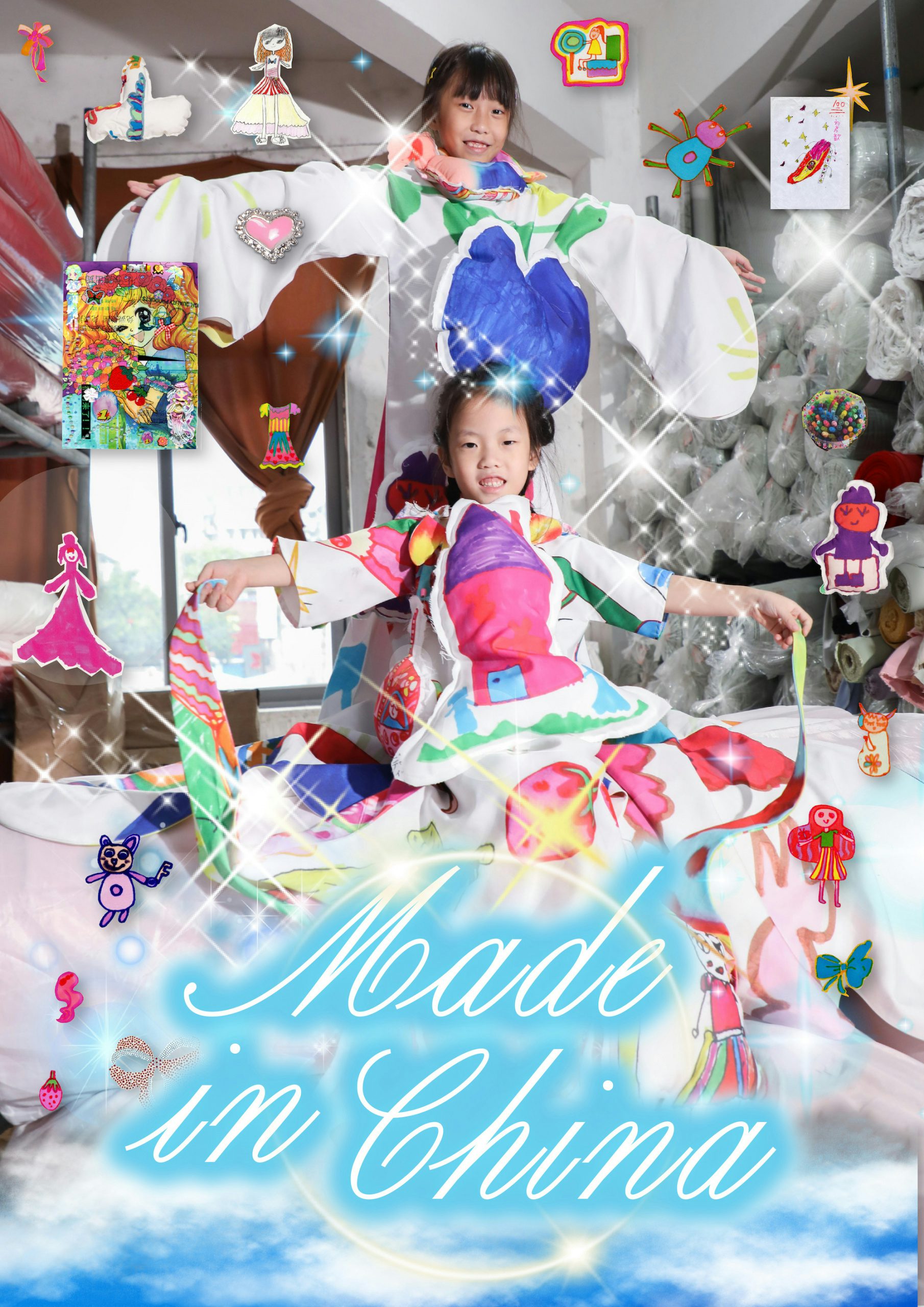
The pieces Chan, Xinxin, and Yu created together are deliberately colourful, cheerful and unique; in keeping with both Chan’s own graphic design style and the broader aims of the project. The graphic language reflects the busyness of Guangdong and the factory itself, where shop graphics and so on use a style with a “very colourful and direct, maybe ‘cheap’ visual language” out of necessity – it has to stand out.
“The Chinese equivalent of UK poundshops have their own style so I wanted to use the right visual language to say what I wanted – the colourful, busy things are straight from that,” says Chan. “It’s also trying to describe the environment the children are living with, but I’m not trying to say ‘this is bad’, I just want to respond to people’s stereotype of ‘Made in China’. For these families, they’re not thinking about if it’s good or bad – it’s just what they’re living with, so I wanted to present it honestly.”

